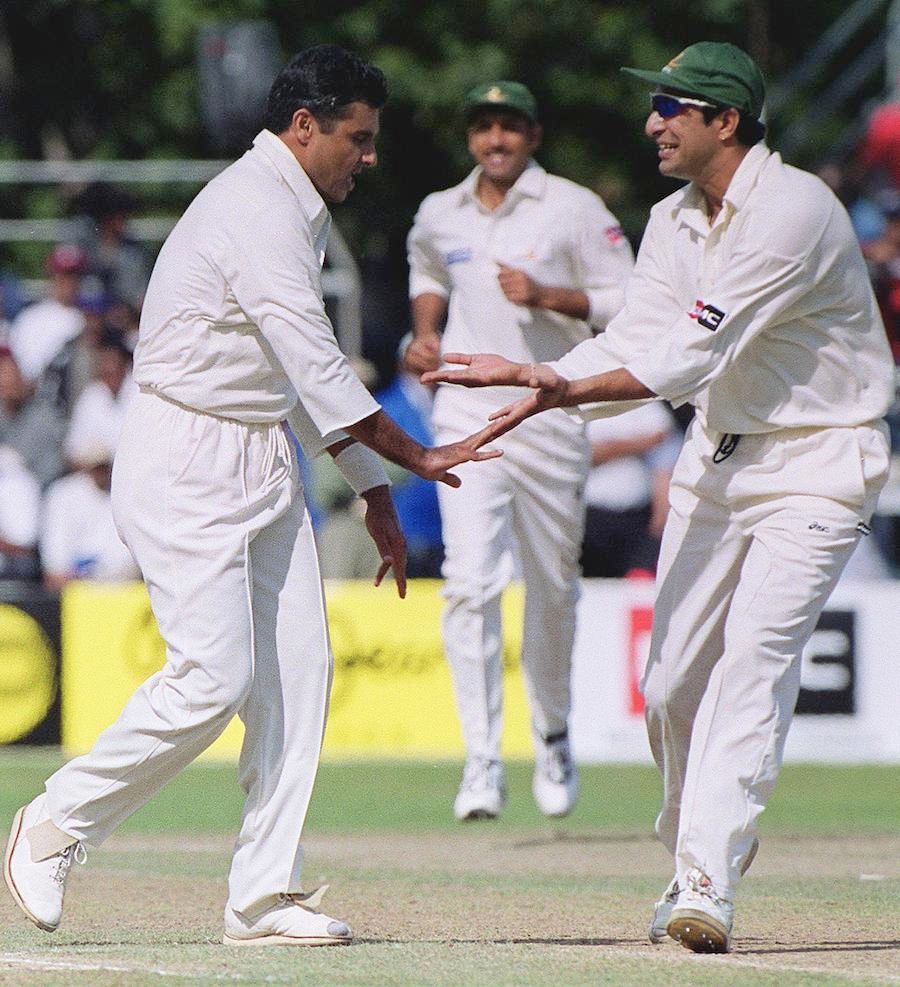
The art of reverse swing bowling
Reverse swing is the art of making the older ball move in the air. It is also known as Irish swing. In case of conventional swing, which has existed right from cricket’s inception, the ball swings in the opposite direction of the shine. But in case of reverse swing as the name suggests, the ball swings in the direction of the shine. When the ball starts reversing, bowlers tend to hide the ball in order to prevent the batsmen from ascertaining the direction in which the ball will reverse swing.
In order to achieve reverse swing, one of the prerequisites is that one side of the ball must be shiny, sans any dirt and the other side of the ball must be as rough and coarse as possible. Reverse swing does not come into play without bringing the ball to such a condition. Hence for reverse swing to be achieved, dry pitches and rough outfields are a necessity. When there are lush green outfields, both sides of the ball will continue to be smooth and shiny; hence, the ball will continue swinging conventionally even as it gets old.
The exact origins of reverse swing are unclear, but it is said that reverse swing saw the light of day first in Pakistan in the 1940s, though it might have been in practice in other countries earlier without anyone identifying it by name. While there is some doubt about the history of reverse swing, there’s absolutely no doubt that the pair of Sarfaraz Nawaz and Imran Khan from Pakistan in the 1970s were the first exponents of reverse swing bowling in international cricket. Both Nawaz and Imran could make the new ball swing both ways and were a potent partnership as a result, but they posed even more of a threat with the old ball due to their mastery over reverse swing.
A fine example of this was the Melbourne Test match between Australia and Pakistan in 1979. Australia seemed to be cruising in their run chase of 382 in the 4th innings with the score at 305/3 and Allan Border and Kim Hughes at the crease. The Pakistan captain Mushtaq Mohammad, desperate for wickets, called Sarfaraz into the attack, and he responded with a fine display of reverse swing bowling to end with figures of 9/86 in the innings. Australia were bundled out for 310, losing their last 7 wickets for just 5 runs, thereby conceding the match.
Imran Khan, towards the end of his career, imparted the knowledge he had gained in reverse swing to Wasim Akram and Waqar Younis, for them to form a deadly combination throughout the 1990s. While Imran and Sarfaraz were very good exponents of reverse swing, Wasim and Waqar took it to another level as a result of the blistering pace they possessed. For reverse swing to be really effective, it is imperative that you bowl a fuller length and at speeds of 85 mph and above.
The reason why reverse swing is so difficult to play from a batsman’s perspective is due to the prodigious late movement, and, when that movement is achieved at speeds of around 90 mph, it becomes nigh on impossible to handle. This was exemplified emphatically by Wasim and Waqar time and again in the 1990s, when they were at the peak of their powers. There were numerous occasions when opposition sides while playing against Pakistan would blunt the new ball successfully and be in a position of comfort, only for Akram and Younis to return with the old ball and cause absolute havoc by demolishing the opposition in a matter of a few overs.

Despite the exploits of Wasim and Waqar in the 1990s, other sides were slow in coming to terms with the art of reverse swing bowling. Not many knew how to get the old ball to reverse as successfully as the Pakistani duo did and, as a result, ended up making repeated accusations of ball tampering against the Pakistanis. While there might have been a tinge of truth to those accusations, the expertise of Wasim and Waqar in getting the old ball to reverse as late and as prodigiously as they did was largely unappreciated.
Reverse swing and ball-tampering seemed inextricably linked in the 1990s, but the situation is now changing with reverse swing being considered a legitimate tactic. It is now being used adeptly by most international teams.
England’s success with the ball in the 2010-11 Ashes in Australia on flat pitches was largely due to the skill of the English bowlers in executing reverse swing, as opposed to the Australians. Proper ball maintenance is critical in executing reverse swing. England, fully aware of that being the case, handed the responsibility of shining the ball exclusively to Alastair Cook during the tour. Cook doesn’t sweat profusely and hence was able to ensure while shining one side of the ball that the rough side continued to remain as dry as possible; therefore, England got the old ball to reverse appreciably throughout the series.
It is a coincidence that as I write this we’ve just seen one of the best spells of reverse swing bowling ever, by Dale Steyn of South Africa against Australia in the recently concluded 2nd Test in Port Elizabeth. Australia, in the 2nd innings, were in a good position at 152/1 in their pursuit of 448 and might have even started entertaining thoughts of pulling off an improbable victory, but Dale Steyn had other ideas.
Steyn looked innocuous with the new ball but seemed to be back to his best when the old ball started reversing. His spell of 4-0-10-3 after tea on the 4th day ensured that SA emerged victorious. He managed to snaffle Michael Clarke, Steven Smith and Brad Haddin in a masterful display of reverse swing bowling. It was reminiscent of a certain Waqar Younis in the 1990s, as the South African speedster bowled a very full length and at high speeds.
It was unfortunate that David Warner, one of the members of the losing Australian side, instead of applauding Steyn’s match-winning efforts with the old ball, chose to level allegations of ball-tampering against the South Africans.
In this day and age, with pitches becoming flatter and bats becoming bigger, the balance between bat and ball is increasingly skewed in favour of the bat; therefore, the ability to swing the old ball is vital in keeping the contest between bat and ball alive. Reverse swing has made the game of cricket richer in my opinion, and it is important that reverse swing bowling gets encouraged rather than be frowned upon.
